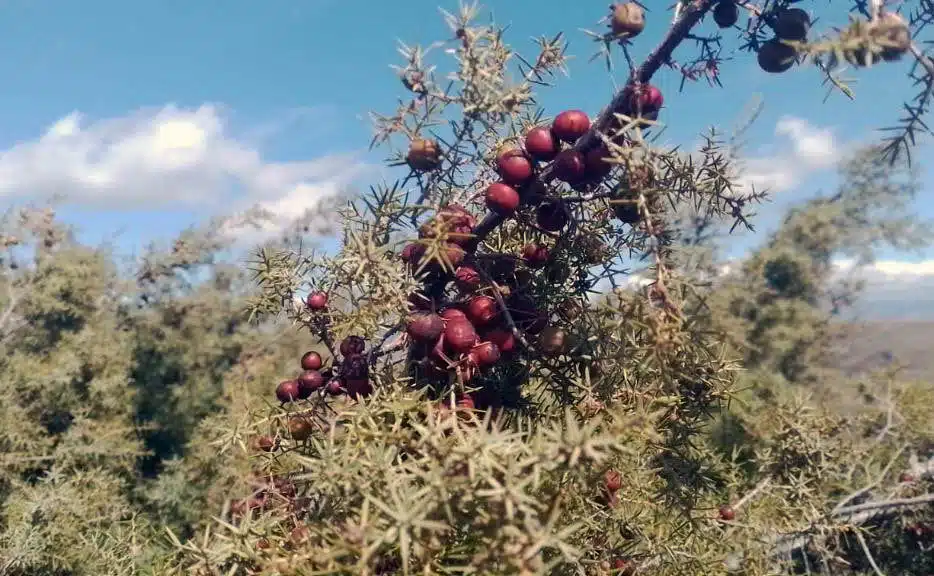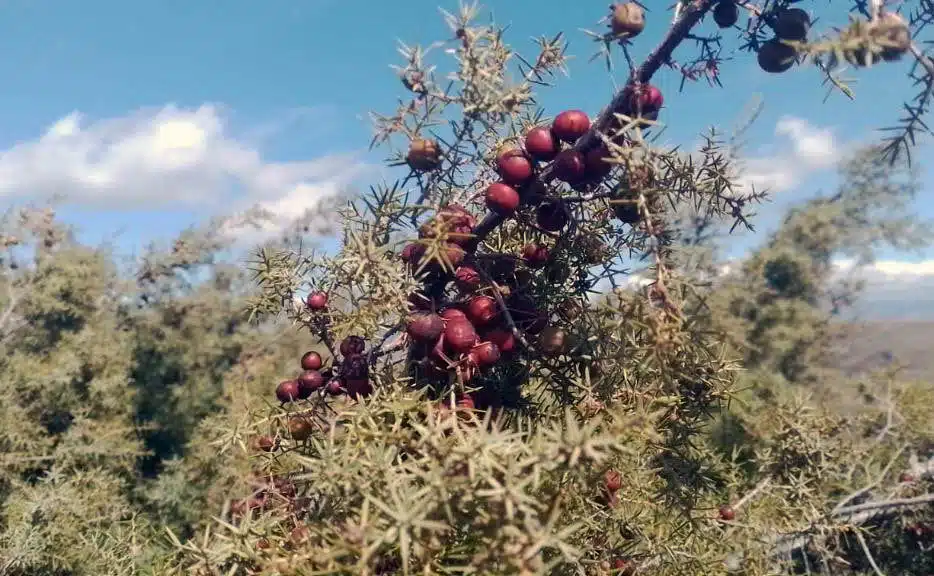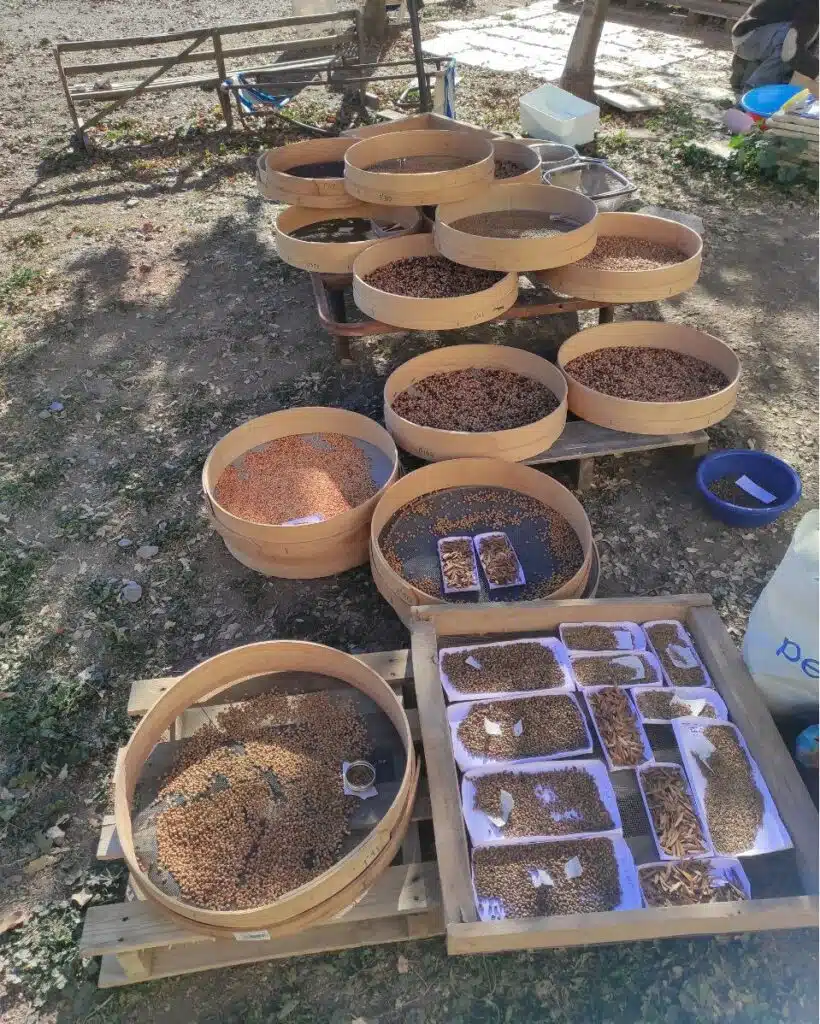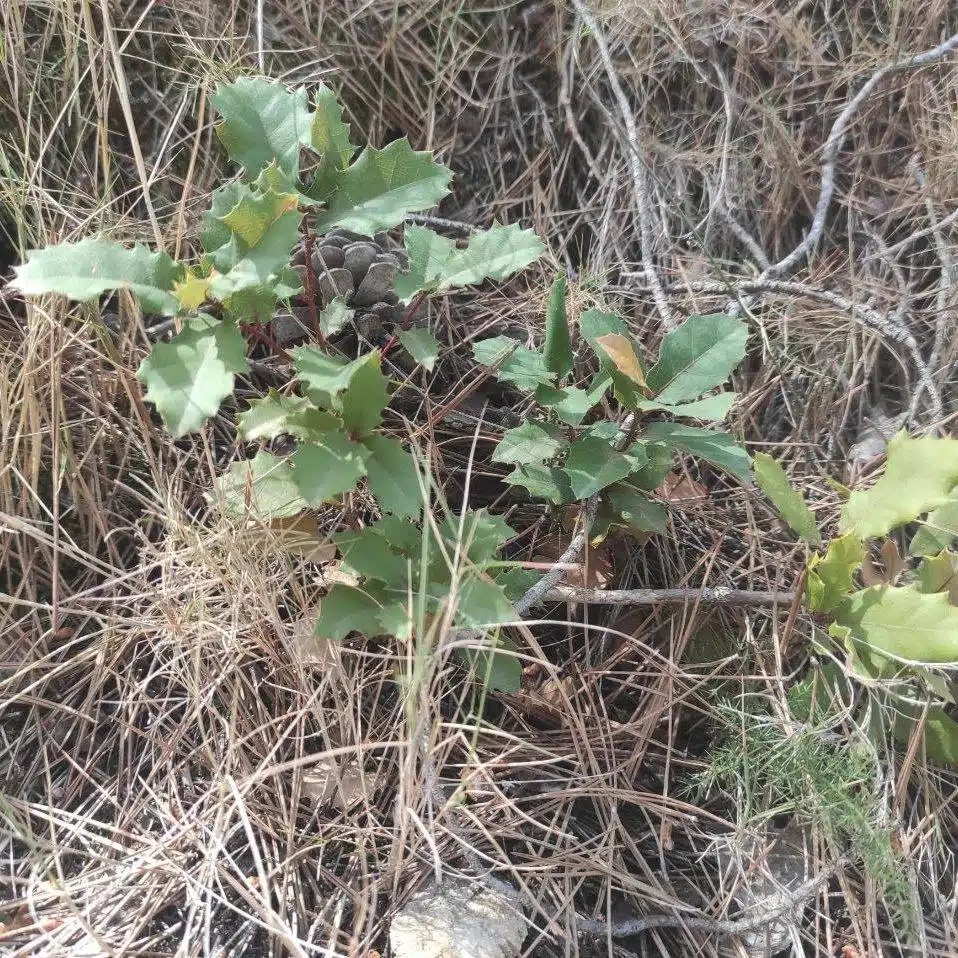With winter coming to an end, we close the last harvest of the season before spring returns to give us new seeds. On this occasion, we have collected Juniperus oxycedrus in Sierra Lújar, a seed with which we have been experimenting for years to understand its standard germination, that is, how it germinates without any previous treatment.
This year we need a good quantity of these seeds to test different priming treatments and find the optimum that will allow us to make effective sowings. The nebro is a very slow-growing species in the Mediterranean: it can take a century to reach our height, but its longevity is extraordinary, living for thousands of years. Its wood is exceptionally hard, and today there are hardly any large trees left from which beams capable of lasting a millennium could be extracted.
Juniperus oxycedrus is one of the key species in our research this year. We want to perfect priming treatments that will allow us to overcome its physiological dormancy, as it needs cold to germinate. Over the past few years we have developed successful protocols for non-dormant seeds, and now we are looking to adapt them to species like this, which require specific conditions to become active.
We are excited about the challenges ahead and about continuing to learn how to improve the germination of these species. With each seed we study, we take one more step towards the regeneration of our forests.





